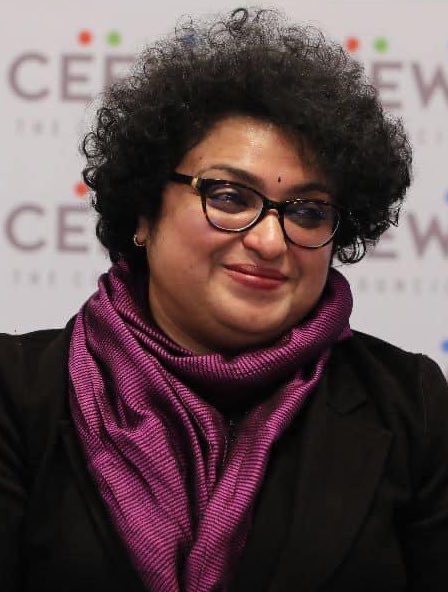(Co-authored with Emmanuel Thomas)
Given the limitations of monetary policy, a fiscal push is crucial for sustained growth recovery.
That the Indian economy has managed to exit a “technical recession” to grow at 0.4 per cent in the third quarter is heartening indeed. However, as compared to an expansion of 4 per cent during the last year, the economy is estimated to contract 8 per cent in the current fiscal. The second advance estimate of national income for the year 2020-21, estimated at Rs 134 trillion, is a contraction of 8 per cent from the first revised estimate of Rs 145.69 trillion in 2019-20. It is also way below the second revised estimate of Rs 140 trillion for 2018-19.
Gross value added (GVA) at basic prices registered a growth of 1 per cent in the third quarter. While only one (agriculture, forestry and fishing) out of the eight sectors registered positive growth in the first quarter, this number has risen to five in the third quarter. Public administration, defence and other services continued to contract. Here, too, it will be instructive to look at GVA growth in the pre-COVID year 2019-20. In the first quarter of 2019-20, mining and quarrying had registered a contraction of 1.3 per cent. In the second quarter, manufacturing also joined the group with a contraction of 5.2 per cent. By the third quarter of 2019-20, the number of contracting sectors rose to four with electricity, gas, water supply and other utility services and construction moving into the red.
A closer look at the quarterly estimates of GDP released by the National Statistical Office (NSO) on February 26 shows that this marginal positive growth is on a low growth of 3.3 per cent registered in the third quarter last year. The next quarter will have a similar advantage as the growth rate in the fourth quarter of 2019-20 was much less than that in the third quarter. Similarly, during 2021-22 too, growth will be a significant positive number because of the unusually big base effect. The Economic Survey and the Union budget anticipates a growth rate of 11 per cent and 10.5 per cent respectively for the next year.
But it is going to take a while for the economy to reach where it was before the pandemic. Even after reaching those levels, the slow growth rate is going to hurt. It will hurt those in the informal and the MSME sector the most. The income loss for them is significant. This is what we can make out from the continuing contraction of private final consumption expenditure in the third quarter too. The lost jobs in these sectors are not going to be restored automatically. The government is expecting that a new investment cycle will start soon. But it is unlikely in the presence of significant excess capacity in many sectors.
Policy certainty is a significant determinant for sustained recovery of the economy. The Union budget 2021-22 is growth-promoting with an adequate emphasis on capital formation. In India, there is a fundamental rethinking about the efficacy of “fiscal rules” — whether adhering to numeric threshold ratios of deficit is growth-enhancing or not. The finance minister has announced a high fiscal deficit of 9.5 per cent of gross domestic product in revised estimates (RE) for 2020-21, against the pegged deficit of 3.5 per cent in budget estimates (BE) 2020-21. However, a roadmap to bring down the high fiscal deficit to 4.5 per cent of the GDP by 2025-2026 was also announced in the budget.
High deficits have no fiscal costs if they can be substantiated with increased public investment or “output gap” reduction. As pointed out by Olivier Blanchard, public debt has no fiscal costs if the real rate of interest is not greater than the real rate of growth of the economy. If the path to fiscal consolidation is through expenditure compression rather than increased tax buoyancy, the quality of fiscal consolidation gets affected. Chapter 2 of the Economic Survey 2021 on public debt sustainability also highlights that “if the interest rate paid by the government is less than the growth rate, then the intertemporal budget constraint facing the government no longer binds.” When the monetary policy stance has limitations in triggering growth through policy rate adjustments, a fiscal push is crucial for a sustained growth recovery.
The new monetary framework (NMF) is now under review in India, and the 2020-21 Report on Currency and Finance (RCF) published by the Reserve Bank of India (RBI) recently said that “the current numerical framework for defining price stability, i.e., an inflation target of 4 per cent with a +/-2 per cent tolerance band, is appropriate for the next five years.” The RBI press release noted that during the period under review, headline CPI inflation averaged 3.9 per cent in India with a decline in inflation volatility, attesting to the success of Flexible Inflation Targeting (FIT) in terms of its primary mandate. However, it is an empirical question whether the inflation targeting framework has been successful in facilitating an economic recovery by stimulating investment. In the context of India, “fiscal dominance” is indeed required for sustained economic growth.
This article is first appeared in the Indian Express on March 10, 2021 under the title ‘Loosen the purse strings’.
Lekha Chakraborty is Professor, NIPFP and Research Associate of Levy Economics Institute of Bard College, New York. Emmanuel Thomas is Doctoral Fellow, CESP, JNU and Assistant Professor St. Thomas College (Autonomous) Thrissur.
The views expressed in the post are those of the authors only. No responsibility for them should be attributed to NIPFP.

